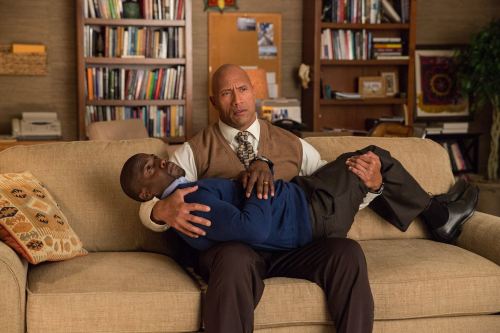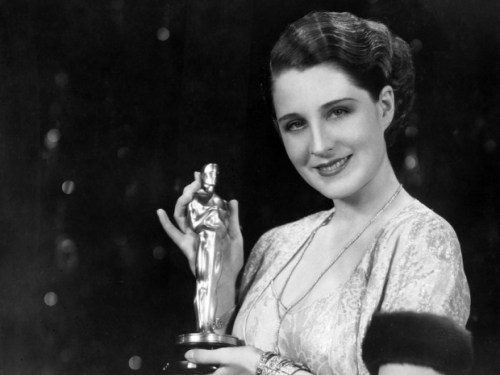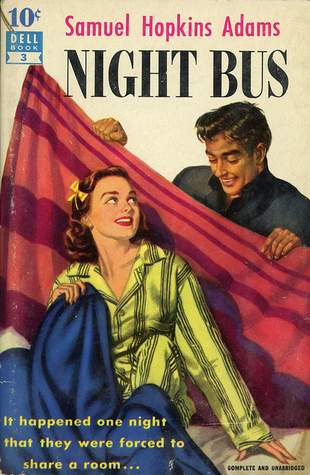 As I’ve written before, I owe my love of movies to my mother. It’s been a rough year on the movie front for us. Several months ago, my mother had surgery to have a tumor removed from her pancreas. Though the operation was a “success” and the tumor was removed, she needed to undergo some light chemo treatments to “remove the microscopic particles we may have missed.” She did so but, unfortunately, the treatments did not remove the microscopic particles. In fact, she is officially stage four. Cancer has returned not only to her pancreas, it has also spread to her lungs and liver. She has had to increase the chemo treatments, a situation that leaves her weak, tired, and generally depressed. The entire process has taken a toll not just on my mom, but also on my dad who sits by feeling helpless to alleviate her pain. He has gone so far as to say that he can accept her dying, because it’s something we will all do one day, but he cannot accept her suffering. Read more
As I’ve written before, I owe my love of movies to my mother. It’s been a rough year on the movie front for us. Several months ago, my mother had surgery to have a tumor removed from her pancreas. Though the operation was a “success” and the tumor was removed, she needed to undergo some light chemo treatments to “remove the microscopic particles we may have missed.” She did so but, unfortunately, the treatments did not remove the microscopic particles. In fact, she is officially stage four. Cancer has returned not only to her pancreas, it has also spread to her lungs and liver. She has had to increase the chemo treatments, a situation that leaves her weak, tired, and generally depressed. The entire process has taken a toll not just on my mom, but also on my dad who sits by feeling helpless to alleviate her pain. He has gone so far as to say that he can accept her dying, because it’s something we will all do one day, but he cannot accept her suffering. Read more
Academy Award History, Part Eight: 1940-1941

As the Academy entered a new decade, several changes came to the Awards. For the first time ever, the winners were kept a complete secret until the envelopes were opened on stage. The first year, the winners were known in advance. But to heighten suspense, the Academy decided that for future shows, the names of the winners would be given to the press on the condition that they would not release the names until after the ceremony. This agreement held until 1939, when the Los Angeles Times printed the winners in their evening edition on the night of the awards thereby “spoiling the surprise.” The decision was made to maintain absolute secrecy regarding the winners, and accounting firm Price Waterhouse & Co. was hired to count the ballots and place the winners’ names in sealed envelopes. There were also numerous name changes for the Best Picture category. The original “Outstanding Picture” lasted for the first two ceremonies before becoming “Outstanding Production” in 1930, a change that held until 1941 when the Academy renamed the prize “Outstanding Motion Picture.” This only lasted for three years before the Academy decided on “Best Motion Picture,” before finally becoming the current “Best Picture” in 1963. Read more
Academy Award History, Part Seven: 1938-1939
 Following the back to back awards for biopics, the Academy moved to the world of adaptation. Hollywood, and the film industry in general, was no stranger to adaptation, but prior to 1937, the only adapted films to win Outstanding Production were based on little-known short stories or forgettable novels (e.g. It Happened One Night, Cavalcade). But with the next two winners, the Academy went with two Pulitzer Prize-winning works, one a long-running Broadway hit, the other a best-selling novel. Both films were popular with audiences and critics, both boasted star-studded casts and talented directors, but time has been far kinder to one of them than it has the other. Read more
Following the back to back awards for biopics, the Academy moved to the world of adaptation. Hollywood, and the film industry in general, was no stranger to adaptation, but prior to 1937, the only adapted films to win Outstanding Production were based on little-known short stories or forgettable novels (e.g. It Happened One Night, Cavalcade). But with the next two winners, the Academy went with two Pulitzer Prize-winning works, one a long-running Broadway hit, the other a best-selling novel. Both films were popular with audiences and critics, both boasted star-studded casts and talented directors, but time has been far kinder to one of them than it has the other. Read more
Academy Award History, Part Six: 1936-1937
By 1935, Hollywood was no stranger to the biopic. Major films of the both the silent and sound era that focused on the lives of major historical figures include Napoléon (1927), The Passion of Joan of Arc (1928), The Private Life of Henry VIII (1933), and Cleopatra (1934). However, other than Charles Laughton’s Best Actor award for his portrayal of Henry VIII, the Academy was largely indifferent to biographical films, preferring to focus on “original” stories. That attitude changed in 1935 when Paul Muni won Best Actor for his work in The Story of Louis Pasteur, and The Great Ziegfeld took home the award for Outstanding Production. This trend would continue the following year with The Life of Emile Zola winning the top honor. The actor in the lead role as Zola? Paul Muni (who lost to Spencer Tracy). Though both films are competent and still watchable, they do have issues that voters apparently overlooked.
Academy Award History, Part Five: 1934-1935
When announcing the winner for Best Director at the sixth Academy Awards, host Will Rogers said, “Come and get it, Frank,” meaning Frank Lloyd, the director of soon-to-be Best Picture winner Cavalcade. However, some thought he meant Frank Capra, who had directed Best Picture nominee Lady for a Day. In fact, Capra himself thought this and actually stood up and began walking to the stage before realizing that he was not the correct Frank. Capra returned to his seat, later referring to the event as the “longest crawl in history.” However, the following year Capra would make a different kind of history by directing It Happened One Night, the first (of only three) films to win all five major awards: Best Picture, Director, Screenplay, Actor, and Actress. Not a bad turnaround. It was a feat no one could have predicted, nor could it have been planned.
Academy Award History, Part Four: 1931-1933
 In 1932, the Academy followed up All Quiet on the Western Front and Cimarron with the star-studded Grand Hotel. The film was a big budget, heavily promoted all-star showcase. For Greta Garbo, the Barrymore brothers—John and Lionel, Wallace Beery, future humanitarian Jean Hersholt, and up-and-coming star Joan Crawford to all appear in the same film was unheard of. But they did and it worked. From the opening telephone booth scene and the glorious bird’s eye view matte shot (above) through the rags to riches ending for (Lionel) Barrymore’s ailing accountant and Crawford’s struggling stenographer, the film attempts and succeeds at pulling together multiple storylines.
In 1932, the Academy followed up All Quiet on the Western Front and Cimarron with the star-studded Grand Hotel. The film was a big budget, heavily promoted all-star showcase. For Greta Garbo, the Barrymore brothers—John and Lionel, Wallace Beery, future humanitarian Jean Hersholt, and up-and-coming star Joan Crawford to all appear in the same film was unheard of. But they did and it worked. From the opening telephone booth scene and the glorious bird’s eye view matte shot (above) through the rags to riches ending for (Lionel) Barrymore’s ailing accountant and Crawford’s struggling stenographer, the film attempts and succeeds at pulling together multiple storylines.
Academy Award History, Part Three: 1929-1931

MGM’s Irving Thalberg’s claim that “talking pictures [were] just a fad” proved to be wrong as 1929’s The Patriot became the last silent film to be nominated for 82 years (you’ll just have to wait if you don’t already know). 1930 marked the year that Hollywood fully embraced full sound pictures. It was the year that the Academy changed the name of the top prize to Outstanding Production, a change that would hold until 1940. It was also the year that there were two Academy Award ceremonies. The 2nd Annual Academy Awards were held on April 30 followed by the 3rd Annual on November 5. The former was for films released August 1, 1928 – July 31, 1929, while the latter was for films August 1, 1929 – July 31, 1930. One reason for doing this was because audiences were confused when awards were being given out to films that were nearly two years old. The Academy wanted to “catch-up” by awarding films that had been recently seen by the audience. The other reason for the quick turnaround was to quiet a controversy that had risen up at the second awards. For the first two Academy Awards ceremonies, the winners were chosen by a committee. This did not cause a problem at the first awards when everyone who won seemed to deserve it. But at the second ceremony, when all of the awards went to films that had been produced by members of the awards committee, Hollywood was not happy. Read more
Sexism in Survival Situations: What We Have and Haven’t Learned from Steven Spielberg
Like many movie fans, especially those who grew up in the 70s and 80s, I awaited the release of Jurassic World with both excitement and apprehension. I really wanted to love this movie, but I was worried that it wouldn’t live up to expectations. After watching it, I was still left split. I liked it, but I was disappointed. It looked like a Steven Spielberg film and, at times, felt like a Steven Spielberg film, but this was no Steven Spielberg film, even if his name is listed as “Executive Producer.” Below are six takeaways from the movie that show what current filmmakers and their audiences learned and failed to learn from watching Spielberg, especially his fantasy/monster/family films, over the past three decades. Read more
Academy Award History, Part Two: 1927-1929

Just what is “The Academy”? The Academy of Motion Picture Arts and Sciences was founded on May 4, 1927. Prior to the Academy, the various branches of the motion picture industry had their own individual guilds and unions (as they still do) but no collective organization where they could all meet and discuss issues in the industry. As actress Mary Pickford put it, the Academy “is our open forum where all branches can meet and discuss constructive solutions to problems with which each is confronted…The producer, star, featured player, cinematographer—in fact, every individual can come into the Academy with any problem or proposal and feel that all barriers are leveled, that in this open court his voice carries the same weight as that of any other person, regardless of position and standing.” The first meeting and banquet was held one week later on May 11. 300 guests attended and 230 joined the Academy for a fee of $100, or a little more than $1300 by today’s standards. Read more
Academy Award History, Part One: An Overview

For several years now I’ve wanted to undertake a year-long viewing of all of the Best Picture Winners in order. There are numerous blogs and lists that rank the Best Picture winners, but that is something I’m not really interested in. Comparing a CGI-infused fantasy epic based on a best-selling trilogy to a World War II drama centered on “the problems of three little people” is ludicrous at best. To say it’s like comparing apples and oranges doesn’t even apply here because at least those are both fruits; it’s more like comparing houses to cars. All of the films on the list are Best Pictures, but that is where the comparison ends. To simply rank Lawrence of Arabia, It Happened One Night, 12 Years a Slave, and All About Eve in relation to each other doesn’t consider the history, innovations, and competition of any particular year. When we throw in the politics of the time, both on a national scale and within the industry itself, the exercise becomes even more pointless. Read more

